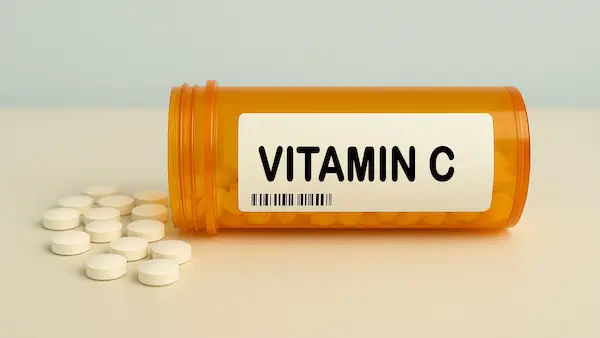Guide to Gastroenterology/5 Healthy Habits Healthy Life
Know about the gastroenterology, what it is, five healthy habits in life, and more than the habits what can be done.

Written by Dr. Mohammed Kamran
Reviewed by Dr. Shaik Abdul Kalam MD (Physician)
Last updated on 21st Oct, 2025

Introduction
Your gut does more than digest food—it shapes your immunity, energy, mood, and long-term wellbeing. If you’ve been searching for a practical guide to gastroenterology/5 healthy habits for a healthy life, you’re in the right place. In this comprehensive, easy-to-follow article, we’ll unpack five core habits that help prevent common digestive issues (like reflux, constipation, and bloating), support a healthier microbiome, and lower risks over time. You’ll learn what to eat, how to hydrate, when to move, how to sleep smarter, and ways to manage stress so your gut can thrive. We’ll also cover red-flag symptoms, when to see a doctor, and simple steps to personalise your plan. Whether you’re rebuilding your gut after antibiotics, managing IBS flare-ups, or simply seeking a healthier routine, these gastroenterology/5 practices can help you feel better—meal by meal and day by day.
What Gastroenterology Covers and Why Lifestyle Matters
Gastroenterology focuses on the digestive system from the oesophagus and stomach to the intestines, liver, pancreas, and gallbladder. While specialists diagnose and treat conditions, most of us influence gut function daily through what we eat, how we move, and how we manage sleep and stress. That’s why “gastroenterology/5 healthy habits” are so transformative: they target the microbiome (your community of gut bacteria), motility (how quickly food moves through), inflammation, and the gut–brain axis.
Consult a Top Gastroenterology Doctor for Personalised Advice
Conditions most influenced by daily habits include:
- GERD (acid reflux): Meal timing, weight, and trigger foods affect symptoms. ACG guidance highlights lifestyle measures like avoiding late-night meals and weight management alongside medications.
- IBS and functional GI disorders: Stress, sleep, fibre type, and food fermentability (FODMAPs) can drive or ease symptoms. NIDDK emphasises personalised diet approaches—especially soluble fibre and, in some cases, a low FODMAP trial.
- Constipation: Hydration, fibre, and movement are foundational. Routine is a powerful tool.
- Diverticular disease, colorectal cancer risk: Diet quality, fibre intake, and activity matter; higher dietary fibre is linked to
lower colorectal cancer risk in observational research.
Habit 1—Eat a Gut-Friendly, Fibre-Forward Plate
Most top articles start with diet—and for good reason. Your gut microbes “eat” what you eat, especially fibres and
polyphenols. A Mediterranean-style pattern—vegetables, fruit, legumes, whole grains, nuts, olive oil, and fish—
consistently supports better metabolic and cardiovascular health and is associated with positive microbiome diversity
Soluble vs. insoluble fibre: why both matter
- Soluble fibre (e.g., oats, barley, psyllium, apples, beans) absorbs water, forms a gel, and can ease diarrhoea or IBS by
slowing transit. It also feeds beneficial bacteria that produce short-chain fatty acids (SCFAs), which support gut lining
integrity. - Insoluble fibre (e.g., wheat bran, leafy greens, carrots) adds bulk to stool and helps prevent constipation by speeding
transit. - Aim for a gentle increase toward 25–38 g/day (adults), with a balanced across both types. If sensitive, ramp up slowly
with adequate hydration.
A Mediterranean-style template for everyday meals
- Half your plate: colourful, non-starchy vegetables (cooked if raw veggies bloat you).
- A quarter: high-fibre whole grains or legumes (e.g., farro, brown rice, lentils).
- A quarter: lean protein (fish, eggs, tofu, chicken) with healthy fats (olive oil, nuts).
- Add fermented foods (yoghurt with live cultures, kefir, sauerkraut) if tolerated.
- Flavour with herbs and spices (ginger, turmeric, mint) for anti-inflammatory benefits.
A sample one-day gut-friendly menu
- Breakfast: Oatmeal with chia, berries, and cinnamon; green tea.
- Lunch: Lentil–vegetable soup, olive oil–dressed salad, whole-grain toast.
- Snack: Live-culture yoghurt with kiwi or a small handful of walnuts.
- Dinner: Baked salmon, quinoa, roasted carrots and zucchini; a squeeze of lemon.
- Optional: Ginger tea after dinner; finish eating 3–4 hours before bed to reduce reflux risk.
Habit 2—Hydrate Strategically (Not Just “Drink More Water”)
Hydration sounds simple, yet it’s often the missing link between good intentions and great digestion. Water softens
stool, supports peristalsis (the wave-like motion that moves food along), and helps soluble fibre work properly. How
much? A common target is about 30–35 ml/kg/day (rough guide), but needs vary by climate, activity, and diet. A
simpler rule: aim for pale-yellow urine most of the day.
How and when to hydrate
- Start early: 1–2 glasses within an hour of waking helps stimulate a morning bowel movement.
- Pair fibre with fluids: If you add psyllium or increase beans and whole grains, bump water.
- Steady sips > chugging: Gentle, frequent sips are easier on a sensitive stomach.
Smart beverage swaps
- Coffee: One or two cups may stimulate bowel movements, but excess caffeine can worsen reflux or IBS diarrhoea. Try
low-acid brews or cold brew for reflux-prone individuals. - Alcohol: Alcohol reduces sleep quality and can trigger reflux and diarrhoea. If reflux is an issue, limit alcohol and avoid
late-night drinks [1]. (LSI: reducing alcohol and reflux) - Carbonated beverages: Bubbles can increase bloating. Try still water infused with citrus, cucumber, or mint.
- Oral rehydration solutions (ORS): During acute diarrhoea, an ORS helps replace electrolytes; keep packets on hand for
travel.
Habit 3- Move Daily to Support Digestion and Metabolism
Physical activity supports gut motility, reduces constipation, improves weight management (key for reflux), and
supports mental health. The World Health Organisation recommends at least 150–300 minutes of moderate-intensity or
75–150 minutes of vigorous activity weekly, plus strength work 2+ days/week [6].
How movement helps digestion
Motility: Even a 10–20 minute walk after meals can reduce bloating and help blood sugar control.
Constipation: Regular activity correlates with more regular bowel movements.
Reflux: Weight reduction and avoiding tight abdominal compression during/after intense meals can reduce symptoms.
Habit 4—Sleep Like Your Gut Depends On It
Sleep isn’t just recovery; it’s regulation. Irregular sleep disrupts hormones that affect appetite, glucose control, and
motility. Circadian rhythms also influence acid secretion and GI sensitivity, which is why late-night meals often worsen
reflux.
Habit 5—Stress Less, Digest Better
The gut–brain axis runs both ways: stress can change motility and sensitivity, while GI symptoms can raise anxiety.
This is especially relevant in IBS and functional GI disorders [2].
Evidence-informed practices
- Diaphragmatic breathing: 5 minutes before meals increases vagal tone, which supports digestion.
- Mindfulness/meditation: 10 minutes daily can reduce IBS symptom severity for some people.
- CBT or gut-directed hypnotherapy: Evidence-based approaches that improve symptom perception and coping—ask
your doctor about referrals. - Biofeedback for pelvic floor dysfunction: For constipation due to dyssynergia, biofeedback is often more effective than
laxatives alone.
Social connection and routine
- Predictable meal and bathroom times condition your body’s “gastrocolic reflex.”
- Aim for daily “parasympathetic pockets”: slow walks, nature, spiritual practice, or a phone-free meal.
Beyond the Five—Doctor-Backed Extras That Matter
Probiotics vs. fermented foods
- Probiotics can help specific conditions, but strains are disease- and symptom-specific; benefits are not universal, and
some AGA guidance cautions against routine use without a clear indication. Start with food-first fermented options
(yoghurt with live cultures, kefir, kimchi) if tolerated, and monitor symptoms. - If you try a supplement, select a strain studied for your condition (e.g., certain strains for IBS) and test for 4–8 weeks.
Medication and antibiotic stewardship
NSAIDs can irritate the stomach; long-term use raises GI risk use under medical advice.
Antibiotics disrupt the microbiome; take only when needed and discuss prevention strategies (e.g., timing probiotics or
fermented foods) with your doctor.
Food safety and travel
- Follow “boil it, cook it, peel it, or forget it” rules when travelling.
- Keep an ORS and a basic travel GI kit (bismuth subsalicylate, antidiarrheals if approved by your doctor).
- Hand hygiene: The simplest, most effective defense.
Smoking and alcohol
- Smoking increases reflux, peptic ulcer risk, and impairs healing.
- Alcohol can exacerbate reflux and diarrhoea; moderation and timing matter for gut comfort.
Screening and useful labs
- Colorectal cancer screening: Typically begins at age 45 for average-risk individuals; frequency depends on test type and
findings—speak with your doctor. - Targeted labs or tests: Celiac screening (tTG-IgA), H. pylori testing for dyspepsia, stool calprotectin (to differentiate IBS
from inflammation), iron studies for anemia, vitamin D if deficient, HbA1c for metabolic health. Apollo24|7 offers
convenient home collection for tests like vitamin D or HbA1c; ask your clinician which ones make sense for your situation.
A 30-Day Gastroenterology/5 Action Plan
Week 1: Rhythm and hydration
- Morning water (500–750 ml before noon), pale-yellow urine goal.
- Regular meal windows; finish dinner 3–4 hours before bed.
- 10-minute walk after two meals daily; 7–8 hours of sleep target.
Week 2: Fibre and plate building
- Add 1–2 servings of high-soluble-fibre foods daily (oats, beans, psyllium).
- One fermented food serving/day if tolerated.
- Track bloat/comfort; scale up slowly.
Week 3: Movement and stress
- Reach 150 minutes/week of moderate activity; add two strength sessions.
- 5 minutes of diaphragmatic breathing before your largest meal.
Week 4: Personalise
- Identify trigger meals and swap equivalents (e.g., sourdough for standard bread; lactose-free yoghurt).
- Trial low FODMAP only if IBS symptoms persist; reintroduce systematically with a dietitian if possible.
Troubleshooting
- Constipation: Increase soluble fiber + hydration + morning movement; consider psyllium.
- Reflux: Earlier dinners, head-of-bed elevation, weight management, avoid alcohol near bedtime, test trigger foods.
- IBS flares: Simplify meals for 3–5 days, emphasise cooked vegetables, low-gas options, and stress reduction.
Myths vs. Facts: Gut Health Edition
Myth: “Probiotics are always necessary.” Fact: Benefits are strain-specific and condition-dependent; many people do
well focusing on diet first.
Myth: “Fibre always worsens IBS.” Fact: Insoluble fibre can aggravate symptoms for some; soluble fibre often helps.
Myth: “Late-night snacks don’t matter.” Fact: Late eating increases reflux risk and can disrupt sleep-driven repair.
Myth: “All fermented foods are equal.” Fact: Products vary widely in live cultures and tolerability; start small and track
your response.
Conclusion
Your digestive system thrives on rhythm, not perfection. By focusing on gastroenterology/5 healthy habits fibre-forward eating, strategic hydration, daily movement, sleep alignment, and stress reduction you create the conditions your gut needs to do its best work. These habits improve motility, lower reflux risk, and help calm IBS and functional GI symptoms, while supporting long-term health. Start small: a glass of water on waking, a short post-meal walk, dinner a little earlier, two minutes of breathing before you eat. As these routines become automatic, you’ll feel the difference more comfort, more energy, and more confidence in your body’s signals. If symptoms persist or you notice red flags, don’t wait: timely evaluation matters. Consider an online consult with Apollo24|7, and use home test collection when appropriate to keep momentum with your plan.
Consult a Top Gastroenterology Doctor for Personalised Advice
Consult a Top Gastroenterology Doctor for Personalised Advice

Dr. Chethan T L
General Physician/ Internal Medicine Specialist
5 Years • MBBS, MD, DNB (General Medicine)
Bengaluru
Apollo Medical Center, Marathahalli, Bengaluru

Dr Harish K C
Gastroenterology/gi Medicine Specialist
15 Years • MBBS MD DM MRCP(UK) (SCE-Gastroenterology and Hepatology)
Bengaluru
Apollo Clinic, JP nagar, Bengaluru

Dr. Jatin Yegurla
Gastroenterology/gi Medicine Specialist
11 Years • MD (PGI), DM (AIIMS Delhi), FAGIE (AIIMS Delhi), ESEGH (UK), Gold Medalist
Hyderabad
Apollo Hospitals Jubilee Hills, Hyderabad
(650+ Patients)

Dr Piyush Vishwakarma
Gastroenterology/gi Medicine Specialist
11 Years • MBBS, MD, DrNB,
Delhi
Apollo Hospitals Indraprastha, Delhi

Dr. Ankit Vijay Agarwal
Gastroenterology/gi Medicine Specialist
14 Years • MBBS(Osmania), DNB(Internal Medicine ), DM ( Osmania) Consultant Gastroenterologist, Hepatologist and Advanced Therapeutic Endoscopist
Hyderabad
Apollo Hospitals Jubilee Hills, Hyderabad
Consult a Top Gastroenterology Doctor for Personalised Advice

Dr. Chethan T L
General Physician/ Internal Medicine Specialist
5 Years • MBBS, MD, DNB (General Medicine)
Bengaluru
Apollo Medical Center, Marathahalli, Bengaluru

Dr Harish K C
Gastroenterology/gi Medicine Specialist
15 Years • MBBS MD DM MRCP(UK) (SCE-Gastroenterology and Hepatology)
Bengaluru
Apollo Clinic, JP nagar, Bengaluru

Dr. Jatin Yegurla
Gastroenterology/gi Medicine Specialist
11 Years • MD (PGI), DM (AIIMS Delhi), FAGIE (AIIMS Delhi), ESEGH (UK), Gold Medalist
Hyderabad
Apollo Hospitals Jubilee Hills, Hyderabad
(650+ Patients)

Dr Piyush Vishwakarma
Gastroenterology/gi Medicine Specialist
11 Years • MBBS, MD, DrNB,
Delhi
Apollo Hospitals Indraprastha, Delhi

Dr. Ankit Vijay Agarwal
Gastroenterology/gi Medicine Specialist
14 Years • MBBS(Osmania), DNB(Internal Medicine ), DM ( Osmania) Consultant Gastroenterologist, Hepatologist and Advanced Therapeutic Endoscopist
Hyderabad
Apollo Hospitals Jubilee Hills, Hyderabad
More articles from General Medical Consultation
Frequently Asked Questions
1) What is the best gut-friendly diet plan for digestion?
A Mediterranean-style pattern rich in vegetables, fruits, legumes, whole grains, nuts, and olive oil supports a healthy microbiome and regularity. Emphasize soluble fiber (oats, psyllium, beans) and add fermented foods if tolerated. Personalise with a dietitian if you have IBS or food sensitivities.
2) How much fibre should I eat for constipation relief?
Aim for 25–38 g/day, increasing gradually with adequate hydration. Soluble fibre (psyllium, oats) is often better tolerated than insoluble fibre. Track symptoms and adjust.
3) Do I need a low FODMAP diet for IBS?
Not always. Start with balanced meals, soluble fiber, stress reduction, and sleep consistency. If symptoms persist, a short-term low FODMAP trial with guided reintroduction can identify triggers. Consult a clinician or dietitian.
4) What are simple exercise tips for digestive health?
Walk 10–20 minutes after meals, reach 150 minutes/week of moderate activity, and add two weekly strength sessions. Even brief “movement snacks” improve motility.
5) When should I see a gastroenterologist online?
If you have red flags (blood in stool, weight loss, severe pain, persistent vomiting), or symptoms persist beyond two weeks, consult a doctor online with Apollo24|7 for evaluation and next steps.



